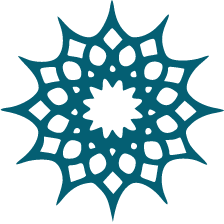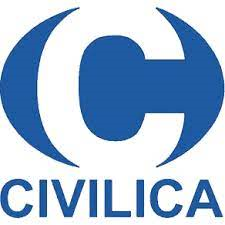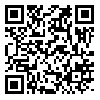المجلد ۳، العدد ۲ - ( ۱۴۴۴ )
المجلد ۳ العدد ۲ صفحات ۲۹۸-۳۲۹ |
الرجوع إلی قائمة المجلدات
Download citation:
BibTeX | RIS | EndNote | Medlars | ProCite | Reference Manager | RefWorks
Send citation to:



BibTeX | RIS | EndNote | Medlars | ProCite | Reference Manager | RefWorks
Send citation to:
Baharvand V, Amouri N, Khalili P. Analysis of the critical discourse in the novel "Nadi-el Sayarat" by Alaa Al-Aswany based on Norman Fairclough's theory. san 2022; 3 (2) :298-329
URL: http://san.khu.ac.ir/article-1-230-ar.html
URL: http://san.khu.ac.ir/article-1-230-ar.html
بهاروند ولي، عموری نعیم، خلیلی پروین. تحليل الخطاب النقدي في روایة "نادي السیارات" لعلاء الأسواني بناء على نظریة نورمان فیركلاف. دراسات في السردانية العربية. ۱۴۴۴; ۳ (۲) :۲۹۸-۳۲۹
ولي بهاروند*۱ 

 ، نعیم عموری۲
، نعیم عموری۲ 

 ، پروین خلیلی۳
، پروین خلیلی۳ 




 ، نعیم عموری۲
، نعیم عموری۲ 

 ، پروین خلیلی۳
، پروین خلیلی۳ 


۱- جامعة شهيد تشمران أهواز، أهواز، ايران ، v.baharvand@scu.ac.ir
۲- جامعة شهيد تشمران أهواز، اهواز، ايران
۳- جامعة شهيد تشمران أهواز، أهواز، ايران
۲- جامعة شهيد تشمران أهواز، اهواز، ايران
۳- جامعة شهيد تشمران أهواز، أهواز، ايران
الملخّص: (۲۲۵۷ المشاهدة)
يشرح الخطاب، العلاقة بين اللغة والمجتمع؛ لأن الخطاب هو استخدام اللغة للتأثير على الجمهور. نشأ تحليل الخطاب النقدي من علم الاجتماع وهو أحد المناهج النقدية الحديثة التي تأثر بالآراء الفلسفية لميشال فوكو وماركس وفرويد ويعتقد أنّ هناك علاقة جدلية بين اللغة والمجتمع. أحد رواد هذا المنهج هو نورمان فيركلاف الذي ترتكز نظريته على ثلاثة مستويات: الوصف والتفسير والتبيين. تعد رواية نادي السيارات لعلاء الأسواني من أشهر الروايات العربية المعاصرة التي تشرح أيديولوجية السلطة والظروف الاجتماعية والسياسية بأسلوب حداثي في المجتمع المصري. في هذا المقال، نحاول تحليل الخطاب النقدي لهذه الرواية على ضوء المستويات الثلاثة لنظرية نورمان فيركلاف وذلك من خلال التمسك بالمنهج الوصفي- التحليلي. تظهر النتائج أن المفردات والتراكيب مثل اختيار صيغة الأمر واستخدام ضمائر الجمع بدلاً من ضمائر المفرد تصف التضامن والأيديولوجية الشمولية والتضاد والتقابل، وتوضح التناقض في شخصية الكوو التي تضطهد المصريين وتطيع الأجانب. ويصف التكرار خطاب الاحتجاج والمقاومة ضد الاستعمار، والمكان الأهم هو "نادي السيارات" حيث تحدث هناك الأحداث المهمة من قبل الأجانب والبريطانيين. على مستوى التفسير، يشير التناص التاريخي إلى النصوص السابقة مثل الآيات القرآنية والروايات والأحداث التاريخية مثل الهولوكوست والهاجانا وديكتاتورية هتلر وجرائمه ضد الإنسانية. على مستوى التبيين يشرح المؤلف إيديولوجية الاستعمار المصري والسلطة في شكلي سلطة بريطانية على مصر بشكل قوي وكذلك سلطة الإنجليزي جيمس على العبيد المصريين بشكل ضعيف في الرواية. يعكس الأسواني ثورة المظلوم ضد الظالم، وأهم أهدافه تدمير الاحتلال البريطاني واستقلال مصر، وبهذه الطريقة يعكس المؤلف الكرامة والإنسانية التي دُمرت تحت براثن المستعمرين.
قائمة المصادر
۱. الأسواني، علاء (۲۰۱۳)، نادي السیارات، القاهرة: دار الشروق.
۲. آراستهخو، محمد (۱۹۹۱)، فرهنگ اصطلاحات علمی - اجتماعی، طهران: كستره.
۳. آقاگلزاده، فردوس (۱۳۸۵)، تحلیل گفتمان انتقادی، تهران: علمی و فرهنگی.
۴. آقاگلزاده، فردوس (۱۳۹۲)، فرهنگ توصیفی تحلیل گفتمان و کاربرد شناسی، طهران: علمی و فرهنگی.
۵. بحراوي، حسن (۱۹۹۰)، بنیة الشکل الروائي، بیروت: المرکز الثقافی العربي.
۶. حلمي، خليل (۱۹۹۸)، دراسات في اللغة والمعاجم، بيروت: دار النهضة.
۷. الراغب الأصفهاني، ابوالقاسم حسين بن محمد (۱٤۰۷)، مفردات في غريب القرآن، تحقیق و ضبط؛ محمد سید کیلاني، بيروت: دار المعرفة.
۸. الزليطني، محمد لطفي (۲۰۱۴)، «من تحليل الخطاب إلى التحليل النقدي للخطاب»، مجلة الخطاب، ۱۷ع، صص ۹-۳۶.
۹. شافعیان، سبحان وکتایون فلاحي ولیلا قاسمي حاجيآبادي (۱۴۴۱)، «تحلیل النصوص الظرفیة والنصیة لروایة لاز طاهر وطار»، مجلة الکلیة الإسلامیة الجامعة، الجزء۱، العدد۵۳، صص۵۴۲-۵۵۷.
۱۰. عكاشة، محمود (۲۰۰۵)، لغة الخطاب السياسي: دراسة لغویة تطبيقية في ضوء نظریة الاتصال، القاهرة: دار النشر للجامعات.
۱۱. فیرکلاف، نورمان (۲۰۰۰)، درآمدی بر گفتمان انتقادی، ترجمة شعبانعلي بهرامپور، طهران: فرهنگ گفتمان.
۱۲. فیرکلاف، نورمان (۱۳۷۹) تحلیل انتقادی گفتمان، مترجمان: فاطمه شایسته پیران و دیگران، ویراستاران: محمد نبوی و مهران مهاجر، تهران: مرکز مطالعات و تحقیقات رسانه ها.
۱۳. فيركلاف، نورمان (۲۰۱۶أ)، اللغة والسلطة، ترجمة: محمد عناني، القاهرة: المركز القومي للترجمة.
۱۴. فيركلاف، نورمان (۲۰۱۶ب)، تحلیل الخطاب السیاسي، ترجمة: عبدالفتاح عمورة، دمشق: دار الفرقد.
۱۵. قهرماني، علي وفاضل بيدار (۱۳۹۹)، «تحلیل گفتمان انتقادی خطبههای علی (ع) در جریان بیعت عمومی»، پژوهشنامه علوی، مج ۱۱، عدد ۲۱، صص ۱-۲۵.
۱۶. مرتاض، عبدالملك (۱۹۹۱)، في تقنیات السرد، الکویت: عالم المعرفة.
۱۷. نوروز، مهدي و فرنكيس فرهود (۱۳۹۵)، «تعلیم تحذیری سعدی در بوستان با رویکرد تحلیل گفتمان انتقادی نظریه فرکلاف»، پژوهشنامه ادبیات تعلیمی، مج ۸، عدد ۳۲، صص ۱۶۱- ۱۹۰.
۱۸. یارمحمودي، لطفالله (۱۳۸۳)، گفتمانشناسی رایج و انتقادی، تهران: هرمس.
۱۹. یورکنسن، ماریان و فیلیبس، لوئیز (۱۳۹۲)، نظریه و روش در تحلیل گفتمان، ترجمه هادي جلیلي، ط ۳، طهران: ني.
20. Aghagolzadeh, Ferdous (1385), Critical Discourse Analysis, Tehran: Scientific and Cultural.
21. Aghagolzadeh, Ferdous (2012), Descriptive Culture of Discourse Analysis and Applied Studies, Tehran: Scientific and Cultural.
22. Akasha, Mahmoud (2005), The Language of Political Discourse: An Applied Linguistic Study in the Light of Communication Theory, Cairo: Universities Publishing House.
23. Al-Aswany, Alaa (2013), Nadi-el Sayarat, Cairo: Dar Al-Shorouk.
24. Al-Raghib Al-Isfahani, Abu Al-Qasim Hussein bin Muhammad (1407), Vocabulary in the strange Qur’an, investigation and control; Muhammad Sayed Kilani, Beirut: House of Knowledge.
25. Al-Zulaitni, Muhammad Lutfi (2014), “From discourse analysis to critical discourse analysis,” Al-Khattab Journal, 17p, pp. 9-36.
26. Arastekho, Mohammad (1991), Dictionary of Scientific-Social Terms, Tehran: Gostrah.
27. Bahrawi, Hassan (1990), The Structure of the Narrative Form, Beirut: The Arab Cultural Center.
28. Fairclough, Norman (1379) Critical Analysis of Discourse, translators: Fatemeh Shaista Piran and others, editors: Mohammad Nabovi and Mehran Mohajer, Tehran: Center for Media Studies and Research.
29. Fairclough, Norman (2000), An Introduction to Critical Discourse, translated by Shaban Ali Bahrampour, Tehran: Farhang Gofteman.
30. Fairclough, Norman (2016a), Language and Power, translated by: Mohamed Anani, Cairo: The National Center for Translation.
31. Fairclough, Norman (2016b), Political Discourse Analysis, translated by: Abdel Fattah Amora, Damascus: Dar Al-Farqad.
32. Helmy, Khalil (1998), Studies in Language and Dictionaries, Beirut: Dar Al-Nahda.
33. Jorgensen, Marian and Phillips, Louise (2012), Theory and Method in Discourse Analysis, translated by Hadi Jalili, 3rd edition, Tehran: Nai.
34. Murtad, Abdul-Malik (1991), In Narrative Techniques, Kuwait: The World of Knowledge.
35. Nowruz, Mahdi and Frangis Farhoud (1395), “Teaching exhortation Saadi Dar Bostan Pa Roykard Gaftman critical analysis of Farclaf’s theory”, Journal of Educational Literature, Vol. 8, No. 32, pp. 161-190.
36. Qahramani, Ali and Fadel Bidar (1399), “A critical analysis of Ghaftman’s sermons by Ali (peace be upon him) in the direction of the flow of public sales,” Alawi Research Journal, Vol. 11, No. 21, pp. 1-25.
37. Shafi’ian, Subhan Wakatayun Falahi and Laila Qasemi Hajiabadi (1441), “Analysis of the circumstantial and textual texts of Laz Taher Watar’s novel,” Journal of the Islamic College Jamia, Vol. 1, No. 53, pp. 542-557.
38. Yarmahmoudi, Lotfollah (2013), popular and critical discourse analysis, Tehran: Hermes.
39. Aghagolzadeh, Ferdous (1385), Critical Discourse Analysis, Tehran: Scientific and Cultural.
40. Aghagolzadeh, Ferdous (2012), Descriptive Culture of Discourse Analysis and Applied Studies, Tehran: Scientific and Cultural.
41. Akasha, Mahmoud (2005), The Language of Political Discourse: An Applied Linguistic Study in the Light of Communication Theory, Cairo: Universities Publishing House.
42. Al-Aswany, Alaa (2013), Nadi-el Sayarat, Cairo: Dar Al-Shorouk.
43. Al-Raghib Al-Isfahani, Abu Al-Qasim Hussein bin Muhammad (1407), Vocabulary in the strange Qur’an, investigation and control; Muhammad Sayed Kilani, Beirut: House of Knowledge.
44. Al-Zulaitni, Muhammad Lutfi (2014), “From discourse analysis to critical discourse analysis,” Al-Khattab Journal, 17p, pp. 9-36.
45. Arastekho, Mohammad (1991), Dictionary of Scientific-Social Terms, Tehran: Gostrah.
46. Bahrawi, Hassan (1990), The Structure of the Narrative Form, Beirut: The Arab Cultural Center.
47. Fairclough, Norman (1379) Critical Analysis of Discourse, translators: Fatemeh Shaista Piran and others, editors: Mohammad Nabovi and Mehran Mohajer, Tehran: Center for Media Studies and Research.
48. Fairclough, Norman (2000), An Introduction to Critical Discourse, translated by Shaban Ali Bahrampour, Tehran: Farhang Gofteman.
49. Fairclough, Norman (2016a), Language and Power, translated by: Mohamed Anani, Cairo: The National Center for Translation.
50. Fairclough, Norman (2016b), Political Discourse Analysis, translated by: Abdel Fattah Amora, Damascus: Dar Al-Farqad.
51. Helmy, Khalil (1998), Studies in Language and Dictionaries, Beirut: Dar Al-Nahda.
52. Jorgensen, Marian and Phillips, Louise (2012), Theory and Method in Discourse Analysis, translated by Hadi Jalili, 3rd edition, Tehran: Nai.
53. Murtad, Abdul-Malik (1991), In Narrative Techniques, Kuwait: The World of Knowledge.
54. Nowruz, Mahdi and Frangis Farhoud (1395), “Teaching exhortation Saadi Dar Bostan Pa Roykard Gaftman critical analysis of Farclaf’s theory”, Journal of Educational Literature, Vol. 8, No. 32, pp. 161-190.
55. Qahramani, Ali and Fadel Bidar (1399), “A critical analysis of Ghaftman’s sermons by Ali (peace be upon him) in the direction of the flow of public sales,” Alawi Research Journal, Vol. 11, No. 21, pp. 1-25.
56. Shafi’ian, Subhan Wakatayun Falahi and Laila Qasemi Hajiabadi (1441), “Analysis of the circumstantial and textual texts of Laz Taher Watar’s novel,” Journal of the Islamic College Jamia, Vol. 1, No. 53, pp. 542-557.
57. Yarmahmoudi, Lotfollah (2013), popular and critical discourse analysis, Tehran: Hermes.
إرسال رسالة إلى المؤلف المسؤول
| Rights and permissions | |
 |
This work is licensed under a Creative Commons Attribution-NonCommercial 4.0 International License. |




.png)



